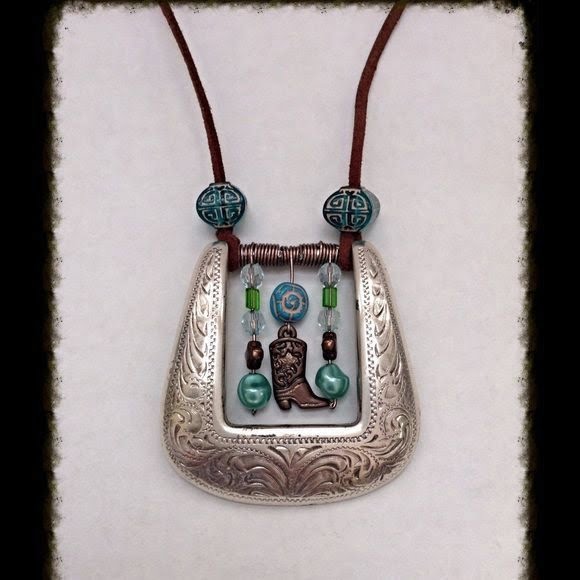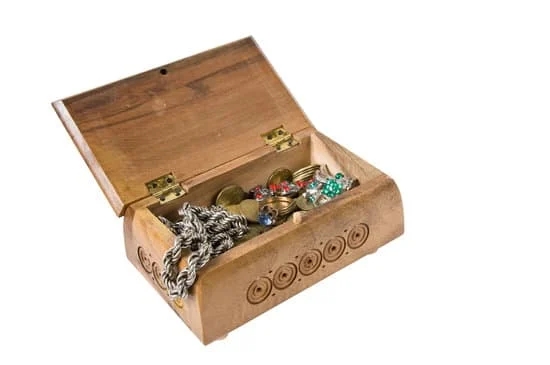The history of scarab jewelry dates back to ancient civilizations and holds a significant place in the world of jewelry design. Scarab jewelry, often featuring the iconic beetle motif, has been cherished for centuries and continues to be admired in modern times. From its origins in ancient Egyptian culture to its evolution through different civilizations, the symbolism, techniques, and materials used in creating scarab jewelry have made it a timeless and enduring style.
Ancient Egypt is where scarab jewelry first emerged, and it held great cultural and religious significance. The use of scarab beetles as amulets and adornments can be traced back to around 3,000 BCE, with intricate designs often incorporating precious metals and gemstones. As society evolved, so did the symbolism and meaning associated with scarab jewelry, leading to its widespread appeal in various cultures across the globe.
The enduring legacy of scarab jewelry extends beyond its ancient origins as it continues to captivate collectors and fashion enthusiasts alike. With a rich history spanning millennia, scarab jewelry remains a sought-after style for those who appreciate the artistry and symbolism behind this timeless accessory.
In this article, we will delve into the origins of scarab jewelry in ancient Egypt, explore its evolution through different civilizations, examine the techniques and materials used in creating these pieces, and uncover famous examples of scarab jewelry in art and history.
Ancient Egyptian Origins of Scarab Jewelry
The history of scarab jewelry can be traced back to ancient Egypt, where the scarab beetle held great significance and symbolism in the culture. The scarab beetle, also known as the dung beetle, was revered by the ancient Egyptians as a symbol of transformation, renewal, and protection. This led to the widespread use of scarab amulets and jewelry in ancient Egyptian society.
The use of scarab jewelry in ancient Egypt dates back to around 2000 BC and was closely associated with religious and funerary practices. Scarab amulets were commonly placed on the bodies of the deceased to ensure safe passage into the afterlife, while others were used as good luck charms and symbols of protection for the living. The designs often featured intricate carvings or inscriptions on semi-precious stones such as lapis lazuli, carnelian, or turquoise.
One of the most iconic forms of ancient Egyptian scarab jewelry is the heart scarab amulet, which was placed over the heart of mummies during the mummification process. These heart scarabs featured engraved spells from the Book of the Dead and were believed to protect the deceased’s heart during judgment in the afterlife. The elaborate craftsmanship and deep symbolism behind these pieces reflect the profound cultural significance of scarab jewelry in ancient Egyptian society.
| Aspect | Data |
|---|---|
| Origin | Ancient Egypt – around 2000 BC |
| Materials | Semi-precious stones like lapis lazuli, carnelian, or turquoise |
| Significance | Symbols of protection, used as good luck charms and in religious & funerary practices |
Symbolism and Meaning of Scarab Jewelry in Ancient Culture
In Ancient Egyptian culture, scarab jewelry held great significance and was deeply rooted in symbolism. The scarab beetle, also known as the dung beetle, was revered by the ancient Egyptians as a symbol of regeneration, transformation, and protection.
The beetle’s habit of rolling dung into a ball and laying its eggs within it was seen as a representation of the sun’s daily journey across the sky and its role in the cycle of life. This belief led to the association of the scarab beetle with ideas of rebirth and eternal life, making it a powerful emblem in ancient Egyptian society.
Symbolism played a crucial role in the use of scarab jewelry in Ancient Egypt. Scarab amulets were often placed on the mummy or carved onto tomb walls to protect the deceased during their journey into the afterlife.
It was believed that wearing scarab jewelry would bring good luck and ensure one’s protection against evil forces. In addition to its protective qualities, scarab jewelry also served as a symbol of power and status, with high-ranking individuals adorning themselves with intricately designed scarab pieces to showcase their wealth and influence.
The widespread use of scarab jewelry in Ancient Egyptian culture extended beyond religious beliefs and superstitions. It became an integral part of everyday life, with both men and women wearing amulets, rings, bracelets, and pendants adorned with intricately carved scarabs. These pieces were not only decorative but also carried deep spiritual meaning for the wearer, providing a tangible connection to their beliefs in rebirth, protection, and prosperity.
Evolution of Scarab Jewelry Through Different Civilizations
The history of scarab jewelry is a fascinating journey that spans across different civilizations, each leaving its mark on the evolution of this iconic style. From its ancient origins in Egypt to its revival in modern fashion, scarab jewelry has undergone various transformations while retaining its symbolic significance.
Ancient Mesopotamia and Greece
In addition to its prominence in ancient Egypt, scarab jewelry also made its way into other civilizations such as Mesopotamia and Greece. In Mesopotamia, scarab amulets were worn for protection, while in Greece, they were associated with the god Apollo and became popular as decorative ornaments. The influence of these civilizations contributed to the spread and adaptation of scarab jewelry beyond Egyptian borders.
Roman Empire
During the Roman Empire, scarab jewelry continued to be worn as amulets for protection and good fortune. However, it also evolved into a form of personal adornment, with intricately carved gemstones set in gold or silver. The Romans incorporated their own artistic styles and motifs into scarab jewelry, further shaping its design and symbolism.
Islamic World
In the Islamic world, scarab jewelry took on new forms as a result of cultural exchange and trade routes. The motifs and materials used in creating scarabs evolved to reflect the artistic traditions of Islamic art, incorporating geometric patterns and calligraphic designs. This period marked a fusion of diverse influences that enriched the history of scarab jewelry.
The evolution of scarab jewelry through different civilizations not only demonstrates its adaptability but also highlights its enduring appeal across diverse cultures. Each civilization has added layers of meaning and creativity to this ancient art form, contributing to its timeless legacy in the world of jewelry design.
Techniques and Materials Used in Creating Scarab Jewelry
The creation of scarab jewelry dates back to ancient Egypt, where these pieces were highly prized for their symbolic significance and aesthetic appeal. The techniques and materials used in crafting scarab jewelry were unique to the time and have evolved over centuries as the popularity of these pieces spread across different civilizations.
In ancient Egypt, scarab jewelry was typically made from precious metals such as gold or silver. Skilled artisans would carve intricate designs into these metals, often depicting symbols of power, protection, and rebirth. The scarab beetle itself was a popular motif, representing the sun god Khepri and the cycle of life, death, and rebirth. These designs were often embellished with vibrant gemstones like lapis lazuli, turquoise, or carnelian to add color and dimension to the pieces.
As scarab jewelry gained popularity beyond Egypt, different civilizations incorporated their own techniques and materials into the creation of these pieces. In ancient Greece, for example, scarab jewelry was crafted using a variety of semiprecious stones carved into intricate designs. The Romans also adopted this style but added their own flair by incorporating brightly colored enamel into their scarab jewelry.
In modern times, contemporary artisans continue to create scarab jewelry using a variety of techniques and materials. While traditional methods are still used by some craftsmen, others have embraced modern technology to design and produce these timeless pieces.
Materials such as high-quality metals, enamel, and an array of gemstones are utilized in creating scarab jewelry that appeals to a wide range of tastes and styles. Overall, the history of scarab jewelry is a testament to its enduring allure and charm across cultures and time periods.
The Revival of Scarab Jewelry in Modern Fashion
Contemporary Interpretation
In recent years, there has been a resurgence of interest in scarab jewelry within the fashion industry. Designers and jewelry makers are taking inspiration from the ancient Egyptian artifacts and reinterpreting them in modern designs. The use of scarab motifs can be seen in earrings, necklaces, bracelets, and even on clothing and accessories.
Popularity Among Celebrities
Celebrities and fashion influencers have also played a key role in popularizing scarab jewelry. Many A-listers have been spotted wearing scarab-inspired pieces on the red carpet and at high-profile events. This has contributed to a renewed interest in this ancient form of adornment among fashion-forward individuals.
Sustainability and Ethical Practices
In line with the growing demand for sustainable and ethical fashion, some designers are incorporating scarab symbolism into their creations as a way to promote environmental consciousness. As an emblem of renewal and transformation, the scarab beetle holds significance in the context of sustainability, making it a fitting motif for eco-friendly jewelry lines.
As the allure of scarab jewelry continues to captivate contemporary audiences, its timeless appeal suggests that this enduring trend will remain relevant for years to come. Whether through traditional craftsmanship or innovative design techniques, the history of scarab jewelry continues to influence the world of modern fashion.
Famous Examples of Scarab Jewelry in Art and History
Scarab jewelry has a rich history that dates back to ancient civilizations and continues to be prominent in today’s fashion world. Throughout history, scarab jewelry has been revered for its symbolic significance and stunning craftsmanship. From the ancient Egyptians to modern designers, scarab jewelry has left an indelible mark on the world of art and adornment.
Famous examples of scarab jewelry in art and history include:
- The Golden Scarab of Tutankhamun: This exquisite piece was discovered in the tomb of King Tutankhamun and is a testament to the skill and artistry of ancient Egyptian craftsmen. Made of gold, with intricate details carved into the precious metal, it serves as a prime example of the importance of scarab symbolism in Egyptian culture.
- Renaissance Scarab Brooches: During the Renaissance period, scarab jewelry experienced a resurgence in popularity. Fashionable individuals adorned themselves with brooches featuring intricately carved scarabs made from precious gems such as emeralds, rubies, and sapphires. These pieces are now prized possessions in museum collections around the world.
- Art Deco Scarab Bracelets: In the 1920s and 1930s, scarab jewelry took on a new aesthetic during the Art Deco movement. Designers created bold and geometric pieces that incorporated colorful gemstones and sleek metals. These bracelets became iconic symbols of elegance and sophistication during this era.
These famous examples serve as testaments to the enduring appeal of scarab jewelry throughout history. Whether they were worn as symbols of protection, good luck, or simply for their beauty, these pieces continue to inspire awe and admiration.
Collecting and Caring for Scarab Jewelry
Scarab jewelry has a rich history dating back to ancient Egyptian times, making it a highly sought-after collectible for jewelry enthusiasts and historians alike. If you’re interested in starting a collection of scarab jewelry, it’s important to know how to properly care for and maintain these beautiful pieces.
When collecting scarab jewelry, it’s essential to consider the materials used in each piece. Ancient scarab jewelry was often made from precious metals like gold and silver, as well as semi-precious stones such as lapis lazuli, carnelian, and turquoise. It’s important to store these pieces carefully to prevent tarnishing or damage. Keeping your scarab jewelry in airtight containers or ziplock bags with anti-tarnish strips can help protect them from exposure to air and moisture.
Caring for scarab jewelry also involves regular cleaning to preserve its beauty. To clean your pieces, use a soft cloth or brush to gently remove any dirt or grime that may have accumulated over time. Avoid using harsh chemicals or cleaners that can damage the delicate materials.
Instead, consider using mild dish soap and warm water to lightly scrub the surface before patting it dry with a clean cloth. With proper care, your scarab jewelry collection can be enjoyed for generations to come.
| Materials Used in Ancient Scarab Jewelry | Caring Tips for Scarab Jewelry |
|---|---|
| Precious metals (gold, silver) | Store in airtight containers |
| Semi-precious stones (lapis lazuli, carnelian, turquoise) | Use mild dish soap and warm water for cleaning |
Conclusion
In conclusion, the history of scarab jewelry is a remarkable journey that spans thousands of years and multiple civilizations. From its ancient Egyptian origins, where it held great religious and symbolic significance, to its evolution and revival in modern fashion, scarab jewelry has maintained its enduring legacy.
Throughout history, scarab jewelry has been intricately linked with beliefs and customs, representing themes such as rebirth, protection, and good luck. Its symbolism in ancient culture has transcended time and borders, making it a timeless and cherished accessory for many.
Moreover, the techniques and materials used in creating scarab jewelry have evolved over centuries, adapting to the changing preferences and aesthetics of different civilizations. From artisanal craftsmanship in ancient Egypt to mass production in modern times, scarab jewelry has continued to be an art form that captivates both creators and collectors.
Lastly, the enduring legacy of scarab jewelry can be seen through its presence in famous examples of art and history. From royal tombs to museum showcases, scarab jewelry continues to be revered for its historical significance and exquisite beauty. As enthusiasts continue to collect and care for these timeless pieces, the history of scarab jewelry will undoubtedly live on for generations to come.
Frequently Asked Questions
What Does the Scarab Symbolize in Jewelry?
The scarab symbolizes the ancient Egyptian concept of regeneration, transformation, and protection. In jewelry, it represents good luck and is often associated with the sun god Ra. Scarab-shaped amulets and pendants were worn for their protective and symbolic significance.
What Does a Scarab Symbolize?
The scarab was a symbol of rebirth and regeneration in ancient Egypt. It was associated with the sunrise, creation, and transformation. This beetle-shaped symbol represented the cycle of life and was seen as a bringer of good fortune and protection.
When Was Scarab Jewelry Popular?
Scarab jewelry was popular during the ancient Egyptian civilization, which flourished from around 3100 BC to 332 BC. It was especially prevalent during the Middle Kingdom (c. 2040-1640 BC) when scarabs were used as amulets, seals, and decorative ornaments in both daily life and burial practices.
The popularity of scarab jewelry continued through different periods of Egyptian history due to its cultural significance and symbolism.

Welcome to my jewelry blog! My name is Sarah and I am the owner of this blog.
I love making jewelry and sharing my creations with others.
So whether you’re someone who loves wearing jewelry yourself or simply enjoys learning about it, be sure to check out my blog for insightful posts on everything related to this exciting topic!





